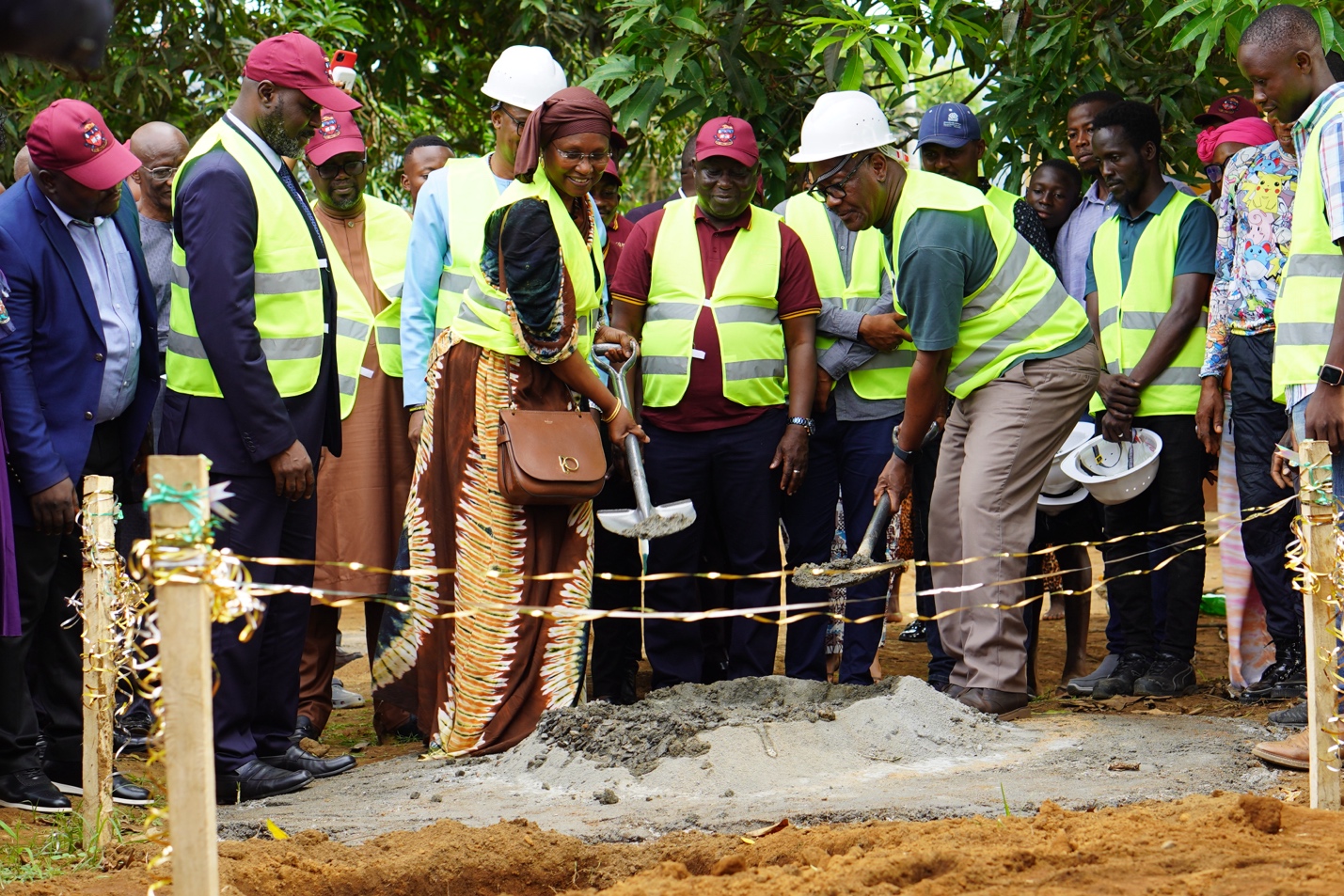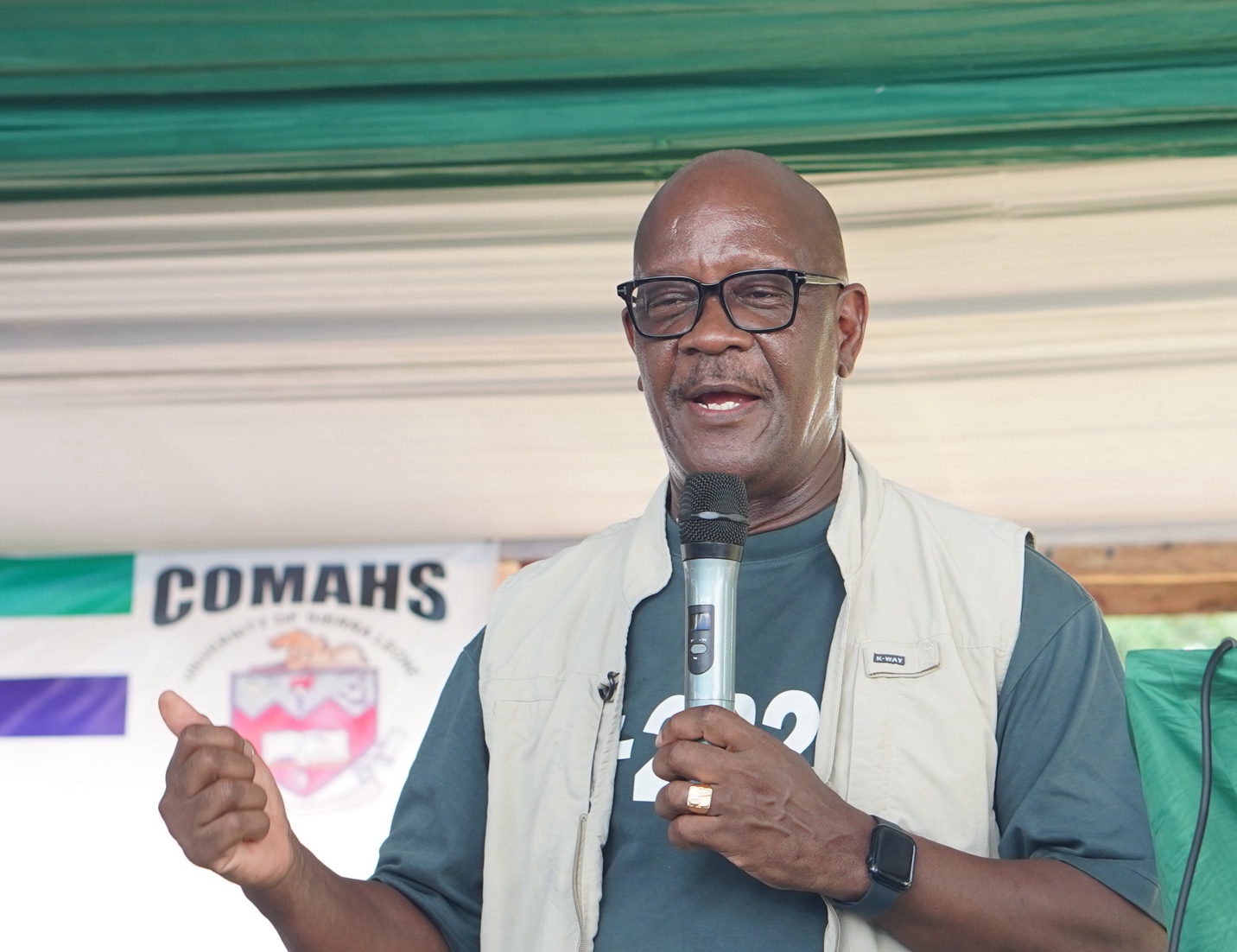The Ministry of Health, (MoH) hits a significant milestone for the advancement of healthcare and medical education in Sierra Leone. An expectant crowd of students and staff celebrated as the Minister of Health, Dr. Austin Demby, turned the sod for the construction of a state-of-the-art Faculty of Basic Medical Sciences at the College of Medicine and Allied Health Sciences (COMAHS).
 The Minister of Health, Dr. Austin Demby, left, turns the sod for the proposed construction of a medical sciences faculty at COMAHS worth about USD$3.5million
The Minister of Health, Dr. Austin Demby, left, turns the sod for the proposed construction of a medical sciences faculty at COMAHS worth about USD$3.5million
This landmark project, worth around USD$3.5 million, symbolizes the ministry’s enduring commitment to excellence in medical training, research, innovation, and patient care. In addition to providing an enabling environment to produce quality medical staff, this new facility will represent more than just bricks and walls. It will become a beacon of hope and a testament to MoH’s unwavering dedication to nurturing the next generation of healthcare professionals.
Before now, Sierra Leone was described as one of the worst places, if not the worst, to become a mother. A key contributor to this problem was the repeatedly poor maternal and child health indices and the lack of skilled manpower. In 2008 for instance, maternal mortality stood at 1,165 over 100,000 live births, which was one of the highest in the world. In 2019, the Government of Sierra Leone reduced this figure to 717. But it was still unacceptably high. However, the last two years have seen a sharp decline in maternal deaths from 717 to 443 per 100,000—one of the lowest in the sub-region.
Whilst these gains are worth celebrating, the leadership of Dr. Austin Demby as Minister of Health still considers these figures as high and unacceptable. The Demby-led administration is now working assiduously to reduce this further to less than 300 by 2025. The country is further determined to achieve the SDG target of reaching less than 70 deaths per 100,000 live births by 2030.
All these ambitious targets cannot be attained without the requisite health infrastructure, training of the required workforce and equipment. In lieu of this, the health ministry is on a deliberate quest to increase the quantity and quality of the professional health workforce.
 A cross section of students at COMAHS share their excitement about the proposed medical sciences faculty building at COMAHS.
A cross section of students at COMAHS share their excitement about the proposed medical sciences faculty building at COMAHS.
Before now, COMAHS only produced about 50 doctors a year, which was grossly inadequate to address the current patient to health worker ratio. Now, MoH is working towards improving this by more than tenfold! To achieve this requires the establishment of more training facilities across the country. The Government of Sierra Leone is well underway to achieve this with the approval of, establishment and operation of another medical school at Njala University. The Ministry has also recently opened a new midwifery school in Kenema, which will cater for midwifery training and increase the quantity and quality of health professionals in the east of the country.
For the Minister of Health, medical education is a cornerstone to advance knowledge and foster discoveries that will shape the future of healthcare in Sierra Leone. That is why he sees the faculty of medical sciences at COMAHS as not just a building, but “a hub of intellectual and scientific endeavor where the seeds of tomorrow’s medical breakthroughs will be planted and nurtured,” he said.
 Minister of Health, Dr. Austin Demby, addresses a large gathering of students and staff of the College of Medicine and Allied Health Sciences (COMAHS) during the event marking the turning of the sod for the construction of a medical sciences faculty.
Minister of Health, Dr. Austin Demby, addresses a large gathering of students and staff of the College of Medicine and Allied Health Sciences (COMAHS) during the event marking the turning of the sod for the construction of a medical sciences faculty.
He went on “our journey to this point has been marked by collaboration, vision, and unwavering dedication. The new faculty building will feature cutting-edge laboratories, interactive classrooms, and advanced research facilities, creating an optimal environment for learning and discovery.”
According to the minister, the facility will also be a place where students and faculty can engage in rigorous scientific inquiry, developing the foundational knowledge critical to medical practice and innovation. The proposed new facility is poised to become a beacon of hope, one that will provide the requisite platform for aspiring medical scientists by providing them with the tools and resources necessary to explore the complexities of human biology, disease mechanisms, and therapeutic strategies.
“The education and training provided here will empower our students to become leaders in their fields, driving advancements that improve health outcomes and enhance the quality of life for the people of Sierra Leone and beyond,” Health Minister, Dr. Austin Demby concluded.

